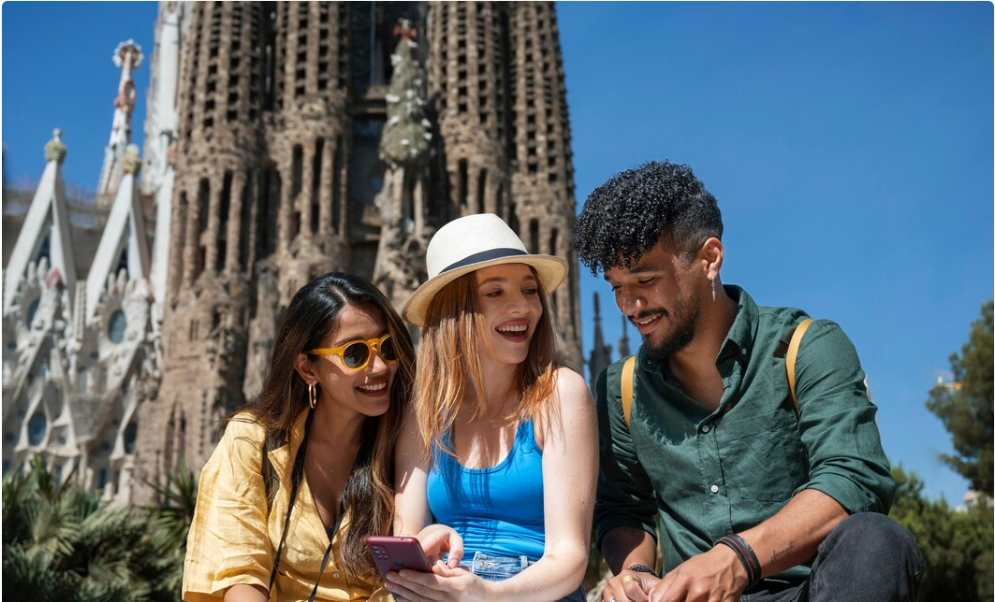
by Dulce Navarro | Apr 30, 2025 | Countries, Europe, Lifestyle, Travel
How to Experience Budget Travel in Italy Without Sacrificing Style
Italy is synonymous with culture, cuisine, history, and style. Yet, for many, the idea of exploring its iconic cities and countryside on a budget often conjures images of crowded hostels or cutting corners. Fortunately, there’s a better way. With thoughtful planning and smart decisions, you can experience the richness of Italy without compromising on comfort or elegance. Here’s how to indulge in la dolce vita—on a dime.
1. Plan Ahead to Snag the Best Deals
The secret to stylish budget travel begins with early planning. Booking flights and accommodations at least two to three months in advance often leads to substantial savings. Utilize comparison platforms like Skyscanner or Google Flights, and consider flying into less popular airports like Bologna or Bari for cheaper options.
When it comes to train travel, Italy’s high-speed rail network is both efficient and scenic. Look for discounted Trenitalia or Italo fares, especially for off-peak hours. Booking tickets in advance online can save you up to 70%.
2. Choose Boutique Over Chain Hotels
Instead of splurging on major hotel chains, opt for locally owned boutique hotels or charming B&Bs. These accommodations often provide a more authentic Italian experience—think exposed brick walls, vintage furnishings, and hand-prepared breakfasts—at a fraction of the cost.
Websites like Booking.com and Agoda often list smaller, independently run stays with stylish décor and top-tier hospitality. Always check reviews and photos to ensure your choice meets both your budget and style standards.
3. Dine Like a Local, Not a Tourist
Italy’s culinary treasures don’t lie in expensive tourist traps but in the local trattorias, osterias, and even street vendors. Cities like Rome, Naples, and Florence offer countless affordable eateries where you can enjoy pasta, pizza, and gelato like a true local.
Skip the restaurant menus in English and look for spots filled with Italians. A three-course meal with wine in a family-run restaurant can cost under €20. Don’t miss out on aperitivo hours, either—many bars offer complimentary snacks with a drink during early evenings.
4. Embrace Slow Travel
Italy is best experienced slowly. Rather than rushing through five cities in one week, consider immersing yourself in one or two places. This not only reduces transportation costs but also allows for a deeper cultural experience.
Smaller towns like Lecce, Siena, or Parma provide the same charm and history as larger cities but at a lower cost. You’ll also find fewer tourists, better photo opportunities, and more chances to interact with locals.
5. Dress the Part with a Capsule Wardrobe
Looking stylish in Italy doesn’t require designer labels. Italians are known for their polished simplicity, and you can follow suit by packing a capsule wardrobe of versatile pieces. Stick to neutral tones, quality fabrics, and layers that can be mixed and matched easily.
For added flair, accessorize with scarves, sunglasses, or a sleek bag. Shopping at Italian markets or vintage stores during your trip can also yield fashionable finds at affordable prices.
6. Take Advantage of Free Cultural Attractions
Many of Italy’s most breathtaking sights are free. From Roman ruins to Renaissance churches, you’ll find history and art around nearly every corner. Major museums, like the Vatican Museums or the Uffizi Gallery, offer discounted or free entry on specific days of the month.
Walking tours, public parks, and panoramic viewpoints—such as Piazzale Michelangelo in Florence or Janiculum Hill in Rome—cost nothing but offer rich experiences and stunning photo ops.
7. Travel During Shoulder Seasons
The best time to travel in style and on a budget is during the shoulder seasons—late spring (April to June) and early fall (September to October). These months offer pleasant weather, thinner crowds, and better prices on flights and accommodations.
In addition to affordability, traveling during these periods ensures you enjoy the essence of Italian life without the rush and high costs of peak tourist season.
8. Use Local Transportation and Walk
Italy’s cities are highly walkable, and public transportation is both efficient and affordable. In Rome, Milan, and Naples, metro tickets start at just €1.50. Many towns also have scenic bicycle rentals or hop-on-hop-off buses for easy exploration.
By skipping taxis and ride shares, you not only save money but also gain a richer understanding of the local rhythm and daily life.
Conclusion: Luxury Is a Mindset
True luxury is not always about spending more—it’s about experiencing more. By traveling thoughtfully and embracing authenticity, you can enjoy all that Italy has to offer while maintaining elegance and staying on budget. From stylish stays to memorable meals and culturally enriching moments, Italy welcomes the savvy traveler with open arms.
Stay Connected for More Travel and Lifestyle Inspiration. For more insights into travel, culture, and lifestyle tips, follow me on
@salvadorordorica. If you’re seeking professional translation and localization services to enhance your global ventures, visit
The Spanish Group — your trusted partner in bridging cultures worldwide.

by Dulce Navarro | Apr 29, 2025 | Countries, Culture, Europe, Lifestyle, Travel
Secret Escapes: Hidden Gems to Discover Across Italy
Italy’s timeless charm is no secret — from Rome’s Colosseum to Venice’s canals, millions flock to the country’s most iconic landmarks each year. Yet beyond the tourist trails lies another Italy: quieter, more intimate, and equally breathtaking. These hidden gems offer travelers a chance to experience authentic culture, untouched landscapes, and moments of true escape. Here are some of the best secret spots to discover across Italy, from hilltop villages to coastal wonders.
1. Civita di Bagnoregio – Lazio
Often referred to as “the dying city,” Civita di Bagnoregio is a dramatic hilltop village accessible only by a pedestrian bridge. Perched on eroded volcanic rock, this near-abandoned town offers panoramic views, medieval streets, and a sense of suspended time. It’s perfect for travelers seeking a contemplative escape not far from Rome.
2. Procida – Campania
While Capri and Ischia attract the glamour crowd, Procida remains an under-the-radar island gem. Named Italy’s Capital of Culture in 2022, Procida charms visitors with its pastel-colored houses, fishing villages, and quiet beaches. It’s easily reachable from Naples but feels worlds away from the crowds.
3. Matera – Basilicata
Matera’s ancient cave dwellings, known as “Sassi,” have transformed the city into one of Italy’s most unique UNESCO World Heritage Sites. Once considered one of the poorest places in Europe, Matera is now a cultural beacon, offering boutique cave hotels, art galleries, and extraordinary gastronomy rooted in southern traditions.
4. Sabbioneta – Lombardy
Sabbioneta is a Renaissance treasure built by a single duke with a utopian vision. With its symmetrical grid layout, UNESCO status, and remarkably preserved architecture, this “ideal city” is a captivating stop for those exploring northern Italy off the beaten path.
5. Valle d’Itria – Puglia
Characterized by its iconic trulli — white stone huts with conical roofs — the Valle d’Itria is a sun-drenched countryside dotted with olive groves, vineyards, and charming towns like Locorotondo and Cisternino. This region offers a slower pace of life and an authentic taste of southern hospitality.
6. Orta San Giulio – Piedmont
Lake Como and Lake Garda often steal the spotlight, but Lake Orta is equally magical and far less crowded. The town of Orta San Giulio, with its cobbled lanes, lakeside promenade, and fairy-tale island monastery, feels like a well-kept secret in Italy’s lake district.
7. Castelluccio di Norcia – Umbria
Nestled high in the Apennines, this tiny village is famous for its breathtaking summer lentil bloom, when the surrounding plains burst into vibrant colors of red, blue, and yellow. It’s a paradise for photographers, hikers, and anyone wanting to witness nature’s palette in full glory.
8. Bosa – Sardinia
Bosa is one of Sardinia’s most picturesque towns, with pastel houses climbing up a hill crowned by Malaspina Castle. The Temo River winds through the town, adding a tranquil charm, while nearby beaches and archaeological sites complete the experience.
9. Trieste – Friuli Venezia Giulia
A port city at the crossroads of Italian, Austrian, and Slavic cultures, Trieste is a cultural melting pot with grand architecture, literary cafés, and a unique energy. Explore Miramare Castle, sip espresso in historic coffee houses, and soak in views of the Adriatic coast — all without the usual tourist buzz.
10. Camogli – Liguria
While Cinque Terre garners global attention, Camogli remains a serene alternative on the Ligurian coast. This charming fishing village boasts a colorful harbor, authentic cuisine, and a relaxed atmosphere. It’s also a great base for hikes into the nearby Portofino Natural Park.
Conclusion
Italy’s famous cities and attractions will always hold allure, but its true soul often lies in the lesser-known places — where tradition, nature, and local life unfold without filters. These hidden gems offer a fresh lens on Italian culture, inviting travelers to slow down and discover a more personal, authentic experience of la dolce vita.
Stay Connected for More Travel and Lifestyle Inspiration.
For more insights into travel, culture, and lifestyle tips, follow me on
@salvadorordorica. If you’re seeking professional translation and localization services to enhance your global ventures, visit
The Spanish Group — your trusted partner in bridging cultures worldwide.

by Dulce Navarro | Apr 29, 2025 | Countries, Europe, Lifestyle, Travel
Top 10 Best Places to Visit in Paris Beyond the Eiffel Tower
Paris, the City of Light, is synonymous with timeless beauty, romantic charm, and iconic landmarks. While the Eiffel Tower justifiably tops many travelers’ lists, the city offers far more than its most famous monument. From tucked-away museums to atmospheric neighborhoods, here are the top 10 best places to explore in Paris beyond the Eiffel Tower.
1. Le Marais
Le Marais is a historic district where medieval Paris meets modern culture. Cobbled streets, boutique galleries, charming cafés, and vintage shops make it a favorite among locals and tourists alike. The area is also home to the beautiful Place des Vosges and a vibrant Jewish Quarter with rich cultural heritage and fantastic falafel.
2. Musée Rodin
For a tranquil museum experience, head to the Musée Rodin, housed in a stunning 18th-century mansion. The museum features an extensive collection of works by the sculptor Auguste Rodin, including the iconic “The Thinker.” The surrounding gardens are just as captivating and provide a peaceful retreat from the bustling city.
3. Canal Saint-Martin
Perfect for a leisurely afternoon, Canal Saint-Martin offers a blend of bohemian charm and local authenticity. The canal is lined with quirky boutiques, indie bookshops, and cozy cafés. It’s also a popular spot for picnicking and people-watching, particularly in spring and summer.
4. Palais-Royal and Its Gardens
Hidden behind the Louvre, Palais-Royal is an architectural gem featuring manicured gardens, historic arcades, and the contemporary art installation “Les Deux Plateaux” by Daniel Buren. It’s an ideal escape for those looking to experience a more serene side of Parisian elegance.
5. Rue Montorgueil
This bustling market street is a food lover’s paradise. Brimming with bakeries, cheese shops, seafood stalls, and traditional French bistros, Rue Montorgueil gives visitors a delicious taste of everyday Parisian life. It’s also a great place to enjoy breakfast or shop for picnic essentials.
6. Sainte-Chapelle
Often overshadowed by nearby Notre-Dame, Sainte-Chapelle is a Gothic masterpiece known for its awe-inspiring stained-glass windows. Located on the Île de la Cité, the chapel dates back to the 13th century and offers an unforgettable experience of light, color, and sacred history.
7. Parc des Buttes-Chaumont
One of the most scenic parks in Paris, Buttes-Chaumont boasts dramatic cliffs, waterfalls, a suspension bridge, and a temple modeled after the Roman Temple of Vesta. Unlike the manicured Tuileries or Luxembourg Gardens, this park feels wild and immersive—perfect for exploration or relaxation.
8. Fondation Louis Vuitton
This contemporary art museum, designed by Frank Gehry, is a visual spectacle in itself. Located in the Bois de Boulogne, the Fondation Louis Vuitton hosts world-class exhibitions and showcases modern and contemporary art in a setting that marries innovation with elegance.
9. Montmartre Vineyards (Clos Montmartre)
Yes, Paris has a vineyard—right in Montmartre. Tucked away near the Sacré-Cœur Basilica, Clos Montmartre is a small yet storied vineyard that dates back to the 1930s. Though not always open to the public, guided tours are available seasonally, offering a unique peek into Paris’s winemaking past.
10. The Passages Couverts
These 19th-century covered arcades are hidden shopping treasures throughout central Paris. Passages like Galerie Vivienne and Passage des Panoramas feature mosaic floors, antique storefronts, and quaint cafés, allowing visitors to wander through a Paris frozen in time.
Conclusion
Paris is a city that continuously reveals itself the more you explore. While the Eiffel Tower is undeniably iconic, the heart of Paris truly comes alive in its lesser-known corners, where culture, history, and modern charm blend seamlessly.
Stay Connected for More Travel and Lifestyle Inspiration.
For more insights into travel, culture, and lifestyle tips, follow me on
@salvadorordorica. If you’re seeking professional translation and localization services to enhance your global ventures, visit
The Spanish Group — your trusted partner in bridging cultures worldwide.

by Dulce Navarro | Apr 28, 2025 | Countries, Europe, Lifestyle, Travel
Essential Travel Tips for First-Time Visitors to Spain
Spain, with its rich history, vibrant culture, and breathtaking landscapes, is one of the world’s top travel destinations. For first-time visitors, navigating the country’s diverse regions, customs, and logistics can feel overwhelming. With a little preparation, however, your trip can become an unforgettable experience. Here are essential travel tips to make your Spanish adventure smooth and memorable.
1. Embrace the Local Culture
Spain is a country made up of distinct regions, each with its own traditions, dialects, and festivals. Whether you’re visiting Catalonia, Andalusia, or the Basque Country, take time to learn about the local customs. Respecting regional identities will enrich your experience and earn you warm receptions from locals.
2. Learn Basic Spanish Phrases
While many people in major cities like Madrid and Barcelona speak English, a basic knowledge of Spanish phrases will go a long way. Phrases such as “por favor” (please), “gracias” (thank you), and “¿Dónde está…?” (Where is…?) will not only help you get by but will also show locals your respect for their language.
3. Understand the Spanish Schedule
Spain is known for its relaxed daily rhythm. Lunch often starts around 2 PM, and dinner can be as late as 9 PM or even 10 PM. Many shops close during the afternoon for a traditional siesta, especially in smaller towns. Plan your day accordingly to align with local customs.
4. Explore Beyond the Big Cities
Madrid, Barcelona, and Seville are amazing, but Spain’s true magic often lies in its smaller towns and countryside. Consider day trips to places like Ronda, Salamanca, or Girona. Exploring these lesser-known gems will give you a more authentic taste of Spanish life and often at a fraction of the cost.
5. Familiarize Yourself with Transportation Options
Spain boasts an excellent public transportation network. High-speed trains (AVE) connect major cities efficiently, while regional buses and metro systems are reliable and affordable. Renting a car might be ideal if you plan to explore rural areas, but in cities, public transport is your best option.
6. Prepare for Diverse Weather
Spain’s climate varies dramatically by region and season. Pack layers and check local forecasts before your trip. While the south enjoys mild winters, the north can be rainy, and cities like Madrid can experience extreme heat in summer. Proper preparation ensures you’re comfortable wherever you go.
7. Respect Local Dining Etiquette
Dining in Spain is an experience. Meals are leisurely and social, often lasting for hours. Don’t rush; instead, enjoy the pace. Tipping is appreciated but not mandatory — typically rounding up the bill or leaving 5-10% is sufficient.
8. Keep Cash Handy
Although credit cards are widely accepted, some smaller businesses, markets, and rural establishments may only take cash. Always have some euros with you, especially for taxis, local shops, or when visiting less touristy areas.
9. Prioritize Safety, But Relax
Spain is generally a safe country for travelers. However, as in any tourist destination, be mindful of pickpockets, especially in crowded areas like Las Ramblas in Barcelona or Puerta del Sol in Madrid. Keep your belongings secure and stay aware of your surroundings.
10. Savor the Regional Cuisines
Each region in Spain offers unique culinary delights. Try tapas in Andalusia, pintxos in the Basque Country, and paella in Valencia. Don’t hesitate to venture beyond tourist menus and try local specialties recommended by locals.
11. Visit Cultural Sites Early
Popular attractions like the Alhambra in Granada, the Sagrada Familia in Barcelona, and the Royal Palace in Madrid can get extremely crowded. Booking tickets in advance and visiting early in the morning can save you time and enhance your experience.
12. Adjust to Spanish Time
Spaniards tend to start their days later and stay out much later compared to other cultures. Embrace the late-night dinners, evening strolls (paseo), and the lively atmosphere that continues well past midnight, especially during festivals or weekends.
13. Be Open to Spontaneity
While planning is important, some of the best experiences in Spain come from spontaneous adventures. Leave room in your itinerary for unexpected discoveries — a hidden beach, a lively local festival, or a new favorite café tucked away in a side street.
14. Travel Insurance Is a Must
While Spain has excellent healthcare, it’s wise to have travel insurance that covers medical needs, trip cancellations, and lost belongings. It gives you peace of mind and ensures you’re protected throughout your journey.
15. Enjoy the Fiesta Spirit
Spain loves a celebration, and there’s almost always a festival happening somewhere. From La Tomatina in Buñol to Feria de Abril in Seville, joining in on a local fiesta will give you unforgettable memories of your Spanish adventure.
Conclusion
Spain offers an incredible blend of tradition, modernity, natural beauty, and lively culture. By preparing thoughtfully and embracing the local way of life, your trip can be smooth, enjoyable, and filled with enriching experiences. Whether you’re wandering medieval streets, savoring world-renowned cuisine, or simply basking in the Spanish sun, you’re sure to fall in love with everything this beautiful country has to offer.
Stay Connected for More Travel and Lifestyle Inspiration.
For more insights into travel, culture, and lifestyle tips, follow me on @salvadorordorica. If you’re seeking professional translation and localization services to enhance your global ventures, visit The Spanish Group — your trusted partner in bridging cultures worldwide.

by Dulce Navarro | Apr 25, 2025 | Business, Countries, Europe, Lifestyle, Travel, Work, Worldwide
Building Community While Working Remotely Across Europe
In the era of remote work, professionals are no longer tethered to a single location. With a laptop and a reliable Wi-Fi connection, many individuals have embraced the freedom of working from anywhere — and for many, Europe has become the ideal destination. From the historical charm of Lisbon to the vibrant culture of Berlin, the continent offers rich experiences, but one challenge remains universal: how to build meaningful community while working remotely.
Remote work may provide independence and flexibility, but it also comes with the risk of isolation. The absence of a physical office, daily interactions with coworkers, and the comfort of familiar surroundings can create a sense of disconnection. That’s why building community as a remote worker isn’t just beneficial — it’s essential.
Understanding the Importance of Community
Community plays a vital role in both our personal and professional lives. It supports mental well-being, encourages collaboration, and nurtures creativity. For remote professionals traveling across Europe, forming connections becomes even more important to avoid the loneliness that can come from being in a new city every few weeks or months.
Luckily, Europe’s thriving remote work culture provides countless opportunities to connect. Whether you’re staying for a few days or several months, there are ways to find your tribe.
1. Tap Into Co-Working Spaces
Co-working spaces are a lifeline for remote workers. Not only do they offer fast internet, comfortable work environments, and professional resources, but they’re also buzzing with fellow digital nomads and entrepreneurs.
Cities like Barcelona, Amsterdam, and Prague are home to some of the most dynamic co-working hubs in Europe. Joining one — even for a short stay — allows you to naturally meet people in similar fields or with similar lifestyles. Many of these spaces also host community events, workshops, and happy hours to encourage networking.
2. Join Local Meetups and Digital Nomad Groups
Platforms like Meetup, Eventbrite, and Facebook groups offer access to local events and digital nomad communities in virtually every European city. These gatherings range from tech talks and language exchanges to casual dinners and hiking adventures.
By attending just a few of these meetups, remote workers can quickly establish friendships, get local recommendations, and build a support system in a new place. Groups such as “Remote Year Alumni,” “Digital Nomads Europe,” and city-specific expat communities are great places to start.
3. Participate in Cultural Events and Local Life
Community isn’t just about other remote workers — it’s about connecting with the local culture too. Attend neighborhood festivals, visit local markets, join a gym, or sign up for language classes. These experiences enrich your time abroad and open up opportunities to meet residents and long-term expats alike.
From wine tastings in Tuscany to open-air concerts in Vienna, Europe offers countless ways to engage with local culture. These moments create shared memories and deepen your connection to each location.
4. Consider Co-Living Options
For remote workers seeking deeper social interaction, co-living spaces can be a game-changer. These accommodations are designed specifically for nomads, with shared workspaces, communal kitchens, and built-in social calendars.
Brands like Outsite, Selina, and Coliving.com have properties in cities and rural areas across Europe, offering an all-in-one solution for both work and community. Staying in a co-living space means you’re surrounded by like-minded people from day one.
5. Stay in One Place Longer
One of the best ways to build community is to stay put — at least for a little while. Slow travel allows you to develop relationships beyond small talk and explore the culture on a deeper level. It gives you time to become a “regular” at your favorite café, form real friendships, and truly integrate into a city’s rhythm.
Remote work makes this possible. By planning longer stays in select cities, you give yourself the chance to build more meaningful and lasting connections.
6. Leverage Online Platforms for Connection
When on the move, digital tools are your best friends. Apps like Bumble BFF, Couchsurfing Hangouts, and even LinkedIn can help you connect with locals, fellow travelers, and professionals. These platforms make it easier to find coffee meetups, study sessions, or coworking collaborations.
Slack communities, Reddit threads, and WhatsApp groups focused on remote work and expat life also offer great ways to connect — especially in cities with large digital nomad populations.
7. Maintain Relationships on the Road
As you move across borders, maintaining the connections you make becomes crucial. Stay in touch with people you meet, organize reunions when paths cross again, and create online networks where you can continue supporting one another.
Remote work doesn’t mean you have to leave relationships behind. In fact, it gives you the unique opportunity to build a global circle of friends, collaborators, and mentors.
Final Thoughts
Working remotely across Europe is an incredible opportunity for professional growth and personal adventure. But without intentional community building, it can also feel lonely and disconnected. Fortunately, with the right mindset and proactive approach, remote workers can create fulfilling social and professional circles no matter where they are.
Whether it’s through co-working, co-living, local events, or digital platforms, community is out there — you just have to reach for it. The freedom to explore the world doesn’t mean leaving connection behind. In fact, it might just be the beginning of the most connected chapter of your life.
Stay Connected for More Travel and Lifestyle Inspiration.
For more insights into travel, culture, and lifestyle tips, follow me on @salvadorordorica. If you’re seeking professional translation and localization services to enhance your global ventures, visit The Spanish Group — your trusted partner in bridging cultures worldwide.

by Dulce Navarro | Apr 23, 2025 | Culture, Europe, Lifestyle, Residency, Travel, Work
Digital Nomad Relocation to Italy: What You Need to Know
In recent years, the allure of working remotely from picturesque European destinations has captured the imagination of digital nomads worldwide. Italy, with its rich cultural heritage, excellent cuisine, and vibrant lifestyle, is quickly becoming one of the top relocation choices for professionals seeking a change of scenery. But before you pack your bags and hop on a plane, it’s essential to understand the legal, logistical, and cultural aspects of becoming a digital nomad in Italy.
The Rise of Digital Nomadism in Italy
Italy’s charm isn’t limited to tourists. Remote professionals are increasingly looking at the country as a viable long-term base. The Italian government has recognized this trend and is actively working to accommodate the influx of international talent through new visa programs, co-working spaces, and support services tailored to digital nomads.
In 2022, Italy introduced legislation to establish a “digital nomad visa,” aimed at non-EU citizens who work remotely and wish to stay in the country for extended periods. While the full details are still evolving, the initiative marks a significant shift in how Italy is embracing remote work culture.
Understanding the Digital Nomad Visa
The Italian digital nomad visa is designed for highly skilled professionals who can work remotely and earn income from clients or employers based outside of Italy. While each applicant’s situation may vary, here are the general criteria:
- Proof of employment or business ownership: You must show that you work remotely for a non-Italian company or clients.
- Minimum income threshold: A stable and sufficient income to support yourself in Italy, often verified via bank statements or contracts.
- Health insurance: Applicants must carry valid international health insurance for the duration of their stay.
- No criminal record: A background check may be required during the application process.
It’s crucial to stay updated with your local consulate, as implementation details and requirements may vary depending on the region and your nationality.
Choosing the Right City
Italy offers a wide variety of cities and towns that cater to different lifestyles. Whether you’re drawn to historic architecture, coastal escapes, or metropolitan innovation, there’s something for everyone. Here are a few popular cities for digital nomads:
- Rome: The Eternal City is ideal for those who love history, culture, and networking opportunities.
- Milan: Italy’s fashion and business hub, perfect for professionals in design, tech, and finance.
- Florence: Rich in art and Renaissance charm, Florence is perfect for creatives and culture enthusiasts.
- Bologna: Known for its universities and tech startups, it offers a vibrant, youthful vibe with lower living costs.
- Sicily & Puglia: If you’re seeking affordability and sunshine, southern Italy offers incredible quality of life at a fraction of the cost.
Cost of Living
The cost of living in Italy varies significantly depending on the city. Larger cities like Milan and Rome can be more expensive, particularly when it comes to housing. However, smaller towns and southern regions offer far more affordable rent, utilities, and groceries—often with the added benefit of a more relaxed pace of life.
On average, a digital nomad can expect to spend between €1,500 and €2,500 per month, including rent, food, transport, and leisure. Shared apartments and long-term Airbnbs are common among nomads looking to keep expenses manageable.
Connectivity and Co-Working Spaces
Italy has significantly improved its digital infrastructure in recent years. Most urban and semi-urban areas have high-speed internet, making it possible to work efficiently from home or a co-working space.
Major cities like Milan, Rome, and Florence are home to numerous co-working hubs offering professional amenities, networking opportunities, and even wellness programs. Examples include Talent Garden (Rome and Milan), Impact Hub, and Copernico.
Cultural Considerations and Integration
While Italians are warm and welcoming, integrating into the local culture may take time. Learning basic Italian is highly recommended and can make everyday interactions—like shopping, dining, and dealing with bureaucracy—much smoother.
Adapting to the Italian way of life means adjusting to a different rhythm. For instance, businesses may close in the afternoon for a few hours, and meals are often leisurely social affairs. Embracing this cultural shift can significantly enhance your experience.
Legal and Tax Considerations
Understanding Italy’s tax laws is essential. If you reside in Italy for more than 183 days per year, you may be considered a tax resident and thus subject to Italian taxation on your global income. This can be complex, especially if you’re earning income from multiple countries.
It’s wise to consult an international tax advisor familiar with Italian laws to ensure compliance and optimize your tax obligations. Double taxation treaties may help reduce your tax liability if you’re paying taxes in your home country.
Final Thoughts
Relocating to Italy as a digital nomad offers an exciting opportunity to blend work and lifestyle in one of the world’s most beautiful countries. With its emerging visa programs, diverse cities, and rich cultural fabric, Italy stands out as a top choice for remote professionals. However, preparation is key—from understanding visa requirements to integrating into local life and managing your finances responsibly.
With the right mindset and planning, your Italian adventure can be not only personally fulfilling but also professionally enriching.
Stay Connected
Stay Connected for More Travel and Lifestyle Inspiration. For more insights into travel, culture, and lifestyle tips, follow me on
@salvadorordorica. If you’re seeking professional translation and localization services to enhance your global ventures, visit
The Spanish Group — your trusted partner in bridging cultures worldwide.






